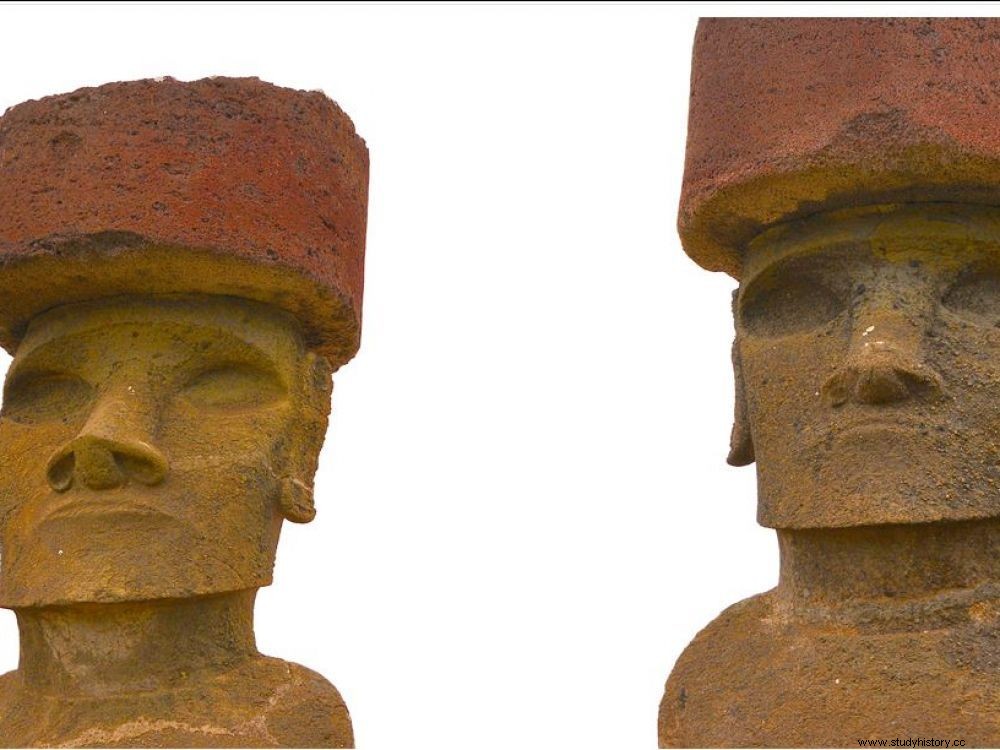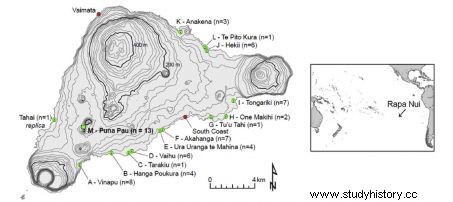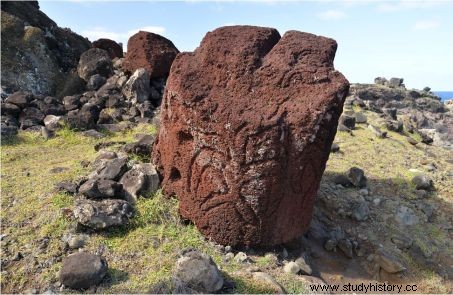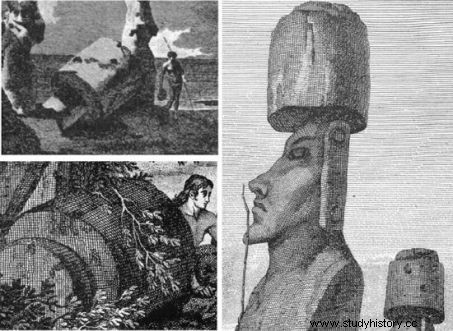In a new study, researchers explain how the multi-ton cylinders that top the mysterious Easter Island statues could have been placed atop them.

moais from Easter Island, topped with pukao , caps weighing several tons.
With its monumental sculptures, Easter Island -Rapa Nui - has always fascinated. And it is not the latest work by a team from Binghamton University in New York State (USA) that will dull its appeal. Quite the contrary. Since they auscultate the moais , these stone giants of the volcanic island located 3747 kilometers from the very first coasts of Chile, the team of anthropologist Carl P. Lipo thinks they have pierced various mysteries. The latest? The way the Pascuans (the inhabitants of Easter Island) would have deposited the pukao - these blocks of volcanic rock weighing up to 13 tons each - on the heads of the petrified colossi, themselves 10 meters high.
In a recent article published in the Journal of Archaeological Science , the American expert and his colleague Sean W. Hixon, of the State University of Pennsylvania, in State College, described the processes of size and transport of about fifty of these singular headgear, since the career by Puna Pau, place of their extraction, to the site of their erection, sometimes 13 kilometers.

For this specialist, a handful of people would have been enough to hoist these cylindrical elements using ropes made of plant fibers along an inclined plane made up of a ramp made of earth and pebbles. This technique known as rolling the trévire* (parbuckle , in English) allows the rope to wind around the object to be pulled. This was then placed on top of the moais carved into the volcanic tuffs of the Rano Ranaku crater (see illustration ).

An "indentation", a slight hollow corresponding to the rounded top of the statues' heads, was previously cut into all the pukao . Once these were installed, the ramps were dismantled and even reused to consolidate the platforms (ahu ). 3D photogrammetric surveys previously carried out on some fifty of these imposing hats had also revealed the existence of a greater number of engraved decorations (petroglyphs) than expected.

Carl P. Lipo has long been interested in the titans of Easter Island and how these revered ancestors may have been moved between various points on the island. In 2011, during a series of experiments carried out in the Hawaiian archipelago, he had for example demonstrated, without however being unanimous, how the islanders had been able to "make their idols work" - "a a bit like a fridge when moving he would say - using simple braided ropes (see video ). Above all, these practices led this scientist to formulate a hypothesis that goes against the conflictual and warlike behaviors generally attributed to the different clans inhabiting the island.
For Carl P. Lipo, joined by Sciences et Avenir , "the construction of moais, as much as the laying of the headdresses, attest that the prehistoric communities of the island knew how to work and cooperate to honor their great ancestral chiefs ". Moreover, the Pascuans would not have cut down the palm forest that covered Rapa Nui to make logs that were deemed necessary to transport the stone colossi, a theory known as ecocide yet often advanced to justify the decline of the island.
*Trevir:a handling technique long used in the navy to roll heavy barrels down inclines.

Easter Island
This tiny and isolated land of just 163.6 km
2
, probably colonized between VI
e
and the XIII
th
century of our era by Polynesians, has only been known to the rest of the world since April 1722. Date of its discovery by the Dutch navigators Jacob Roggeveen and Cornélius Bouman, on an Easter Sunday. A Spanish expedition in 1770 was the first to mention the presence of pukao at the top of the moais . They were talking about crowns then...
